The year 2024 saw a steep decline in the number of models produced by PNSO, 7 models compared to 15 in 2023. Now we’re a month into 2025 with radio silence from PNSO, which has led some to worry about the company’s future. But what PNSO lacked in quantity last year they made up for in quality, and species diversity. In 2023 all but two of their models were theropods but in 2024 we got multiple theropods and sauropods, and a ceratopsian, stegosaur, and ornithopod. Most of these figures also possessed far more complex and colorful paintjobs than we typically see from PNSO. Today we’re looking at the PNSO Lokiceratops. Released in November, it remains the latest release from PNSO, 3 months after its debut.
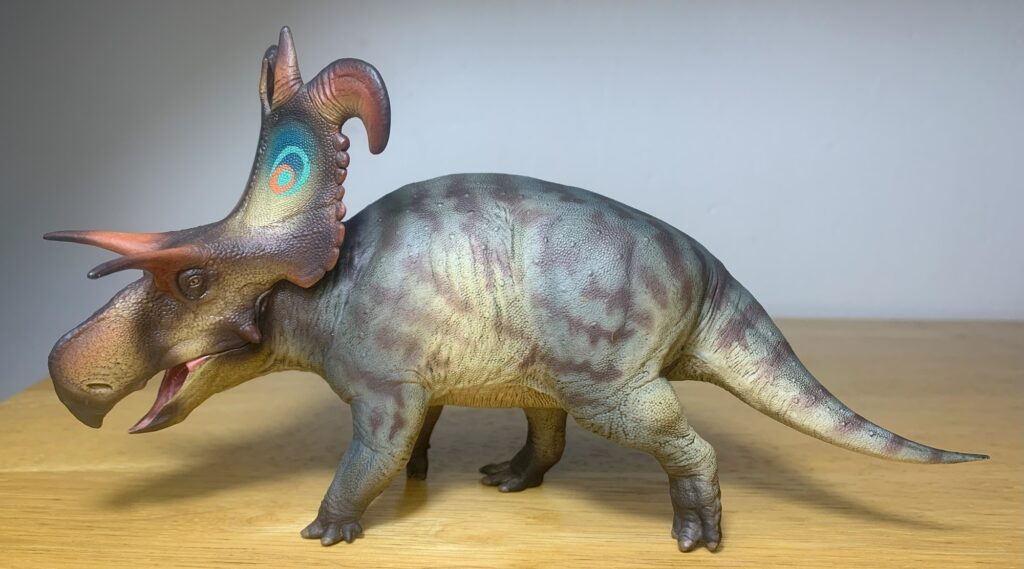
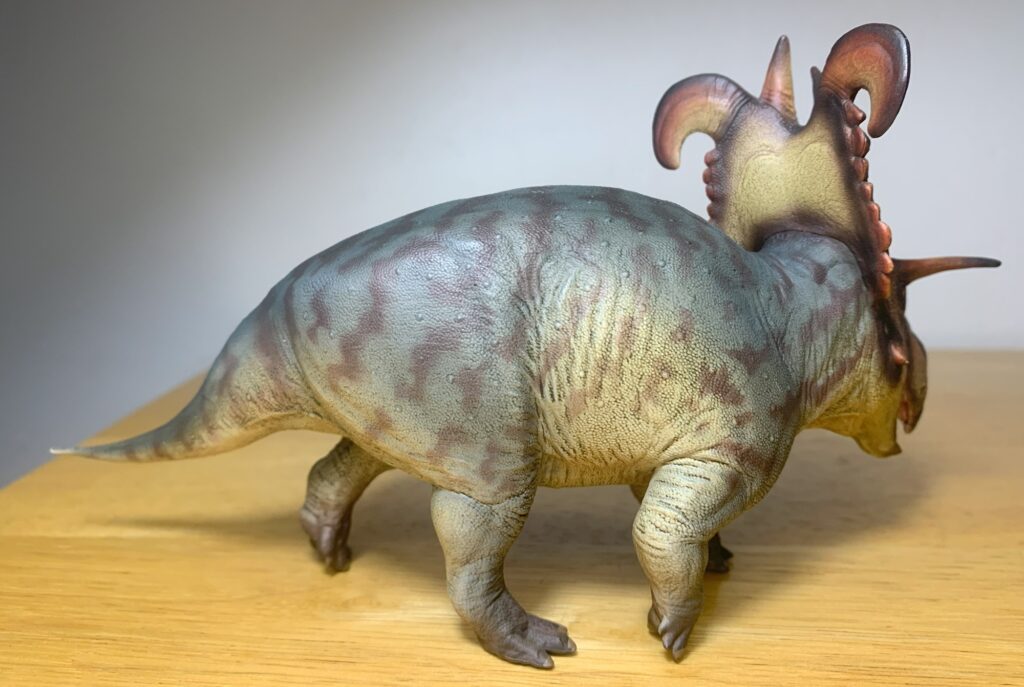
Lokiceratops is a genus of centrosaurine that lived in the late Cretaceous of what is now the Judith River Formation in Montana. Other species from this formation include Edmontonia, Zuul, Corythosaurus, Medusaceratops, Dromaeosaurus, Daspletosaurus, and a large assortment of other dinosaurs both obscure and well known. Lokiceratops was discovered in 2019 but described in 2024, which means a quick turnaround for PNSO in producing a figure of it. It’s almost as though they had insider information, and they did, PNSO collaborated directly with the paper’s authors to produce this model. Frederik, the name given to the PNSO model, is also the nickname of the holotype specimen at the museum where it’s kept.
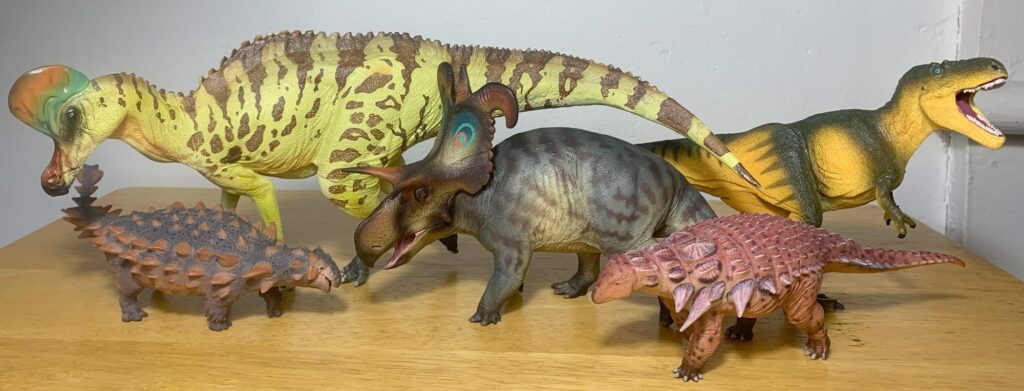
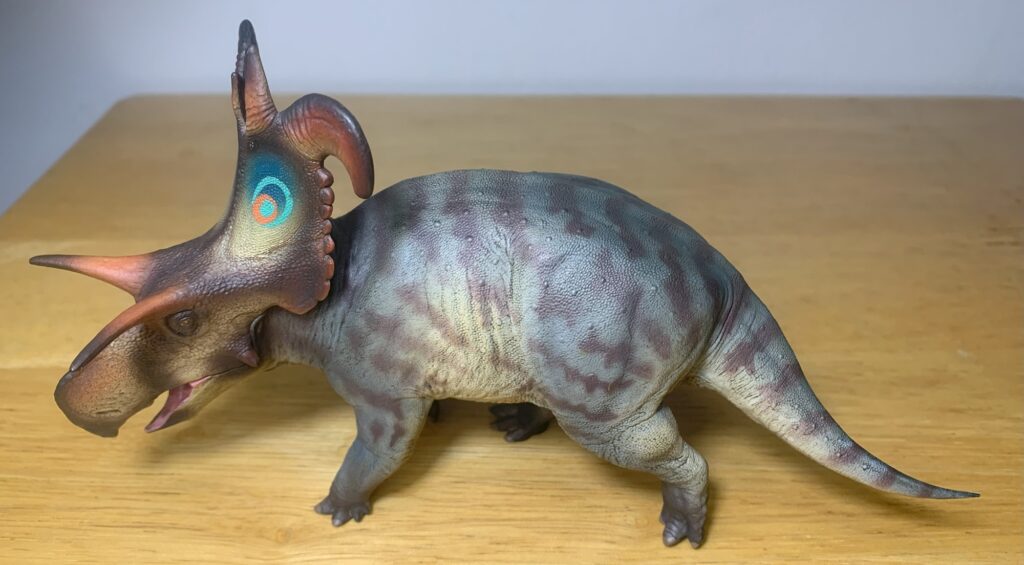
Lokiceratops means “Loki horned face” and it was named after the Norse god of mischief, Loki. This is partly due to the resemblance between the frill horns on Lokiceratops and Loki’s horned helm that he’s often depicted wearing, although I think Diabloceratops nails the Loki look better. The name also honors the partnership between the United States, where the dinosaur was found, and Denmark, where the dinosaur is being kept. The species name, rangiformis, is a reference to the genus Rangifer to which reindeer aka caribou belong. Like reindeer, Lokiceratops also has bilaterally asymmetrical head ornamentation.
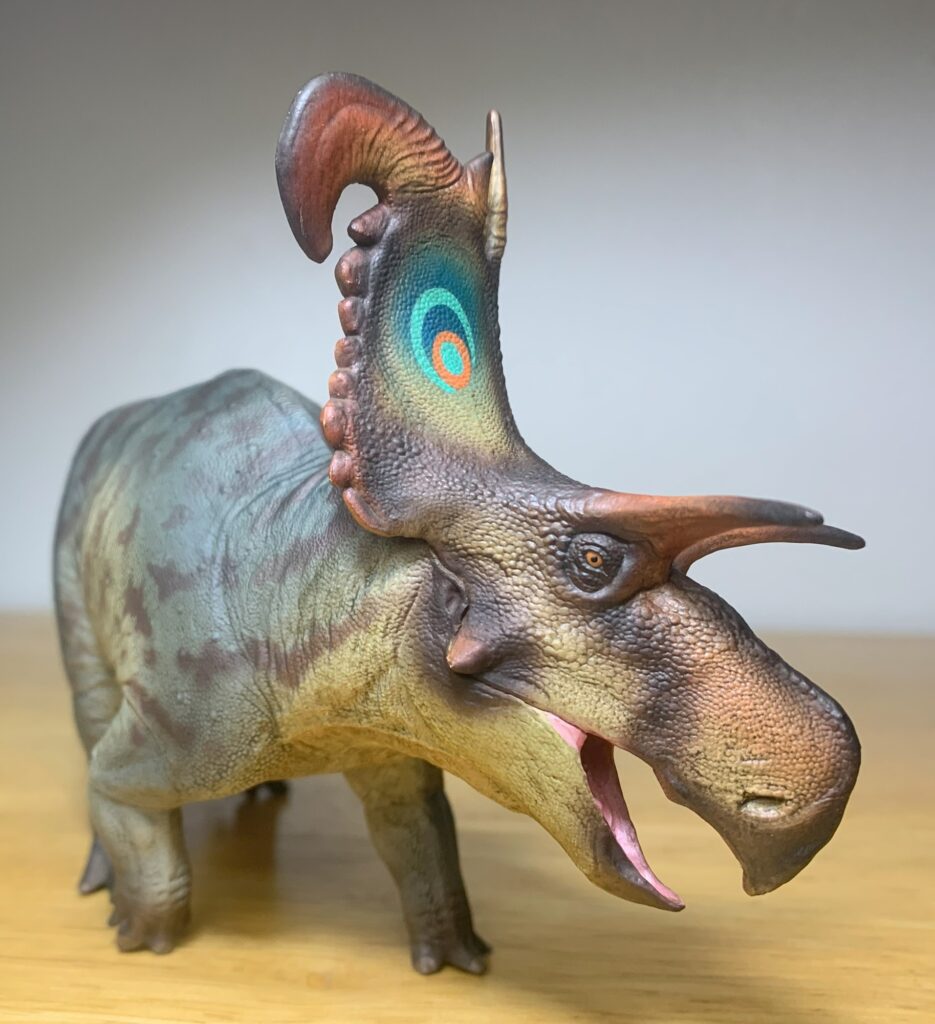
Lokiceratops is most closely related to Albertaceratops and Medusaceratops and possesses cranial ornamentation similar to theirs, but it lacks a nasal horn and is about 20% larger than adult specimens of Medusaceratops. Lokiceratops is estimated to have measured 22’ (6.7 meters) in length. PNSO’s model measures about 7.5” (19.05 cm) long which puts it at about 1/35 in scale. The figure is presented trotting forward and veering towards the left. The head is angled slightly downwards with the mouth open. Only the fingertips of the right forelimb are touching the ground. The tail swoops slightly leftward with the tip swooping slightly to the right. It’s a dynamic pose that makes the model striking from multiple angles.
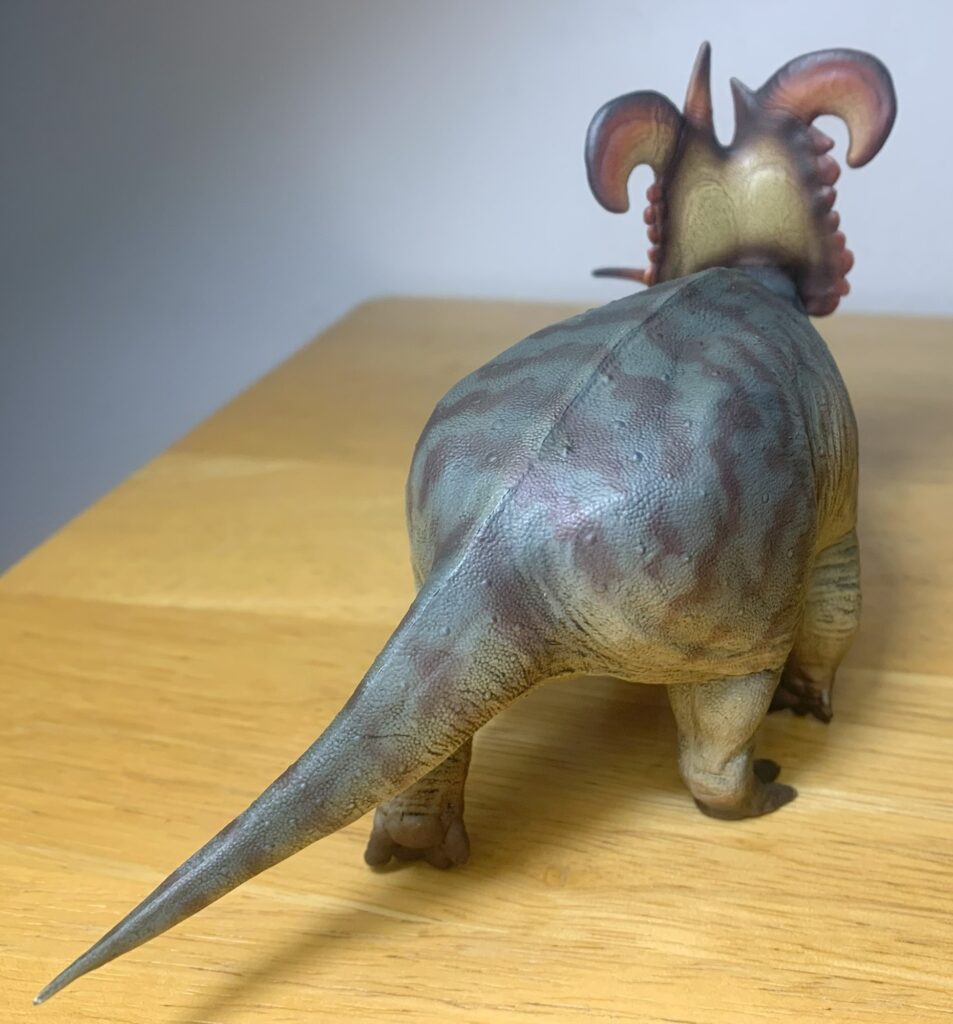
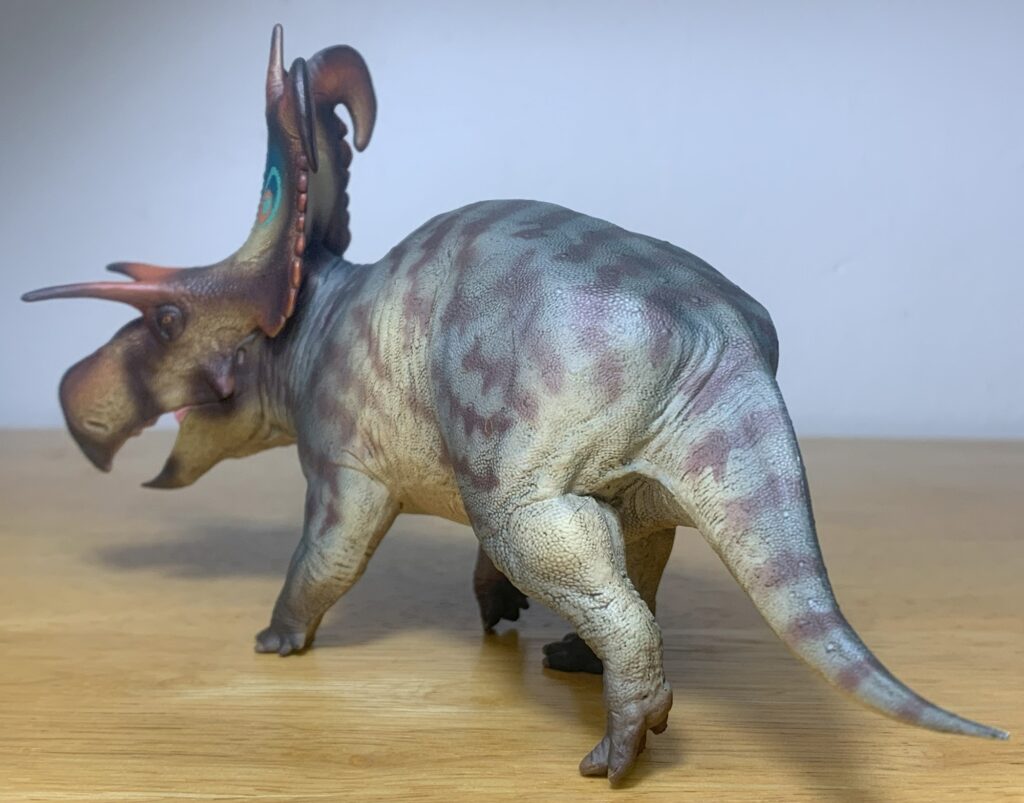
The head sculpt of PNSO’s model is a spot-on representation of what the fossil skull shows, as it should be if PNSO were collaborating with the scientists that described it. Frederik displays the remarkable asymmetry that we see in the holotype. The first epiparietals, located on the top of the frill, differ in size and orientation, with the one on the left being longer than the one on the right and the one on the right pointing inward somewhat. The next set of epiparietals are the largest, and are broad, crescent shaped, and blunted at the tips, and they differ from each other somewhat in size, shape, and orientation. Five smaller epiparietals run down the remainder of the frill on each side and are followed by 3 episquamosals on each side. The brow horns are pointing outwards and away from each other.
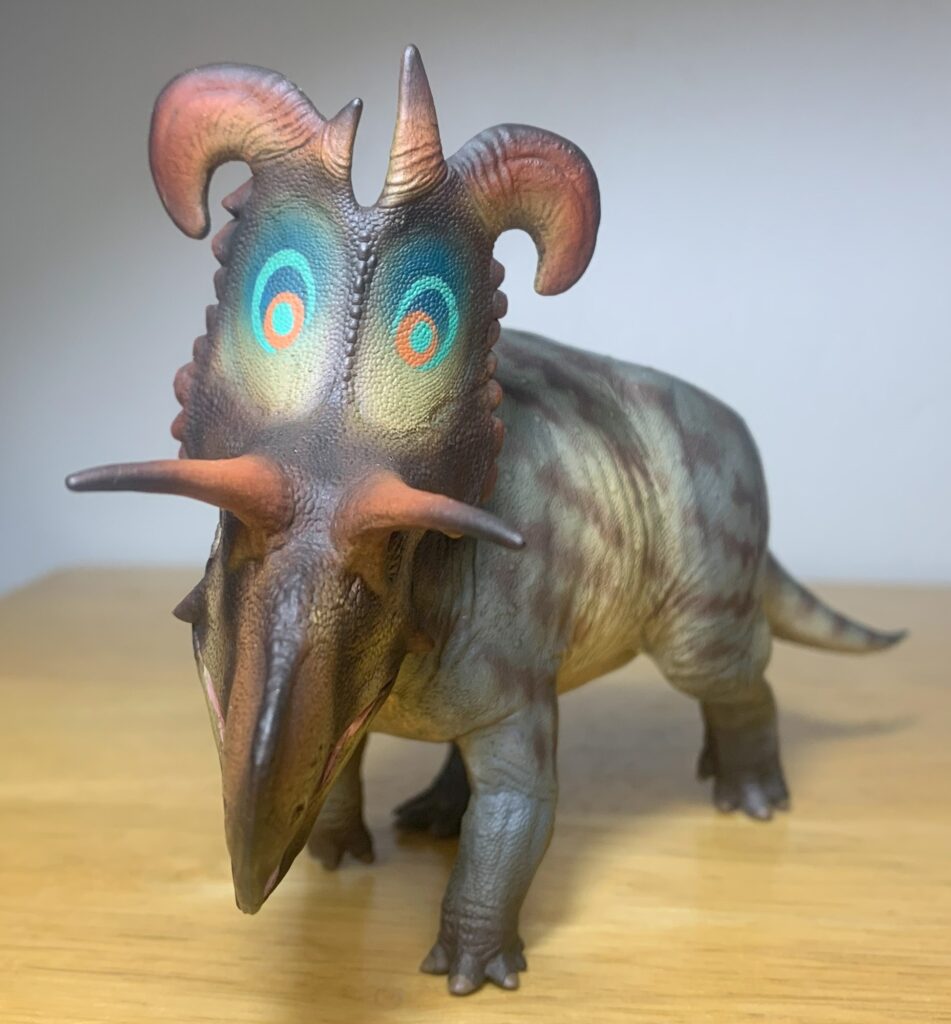
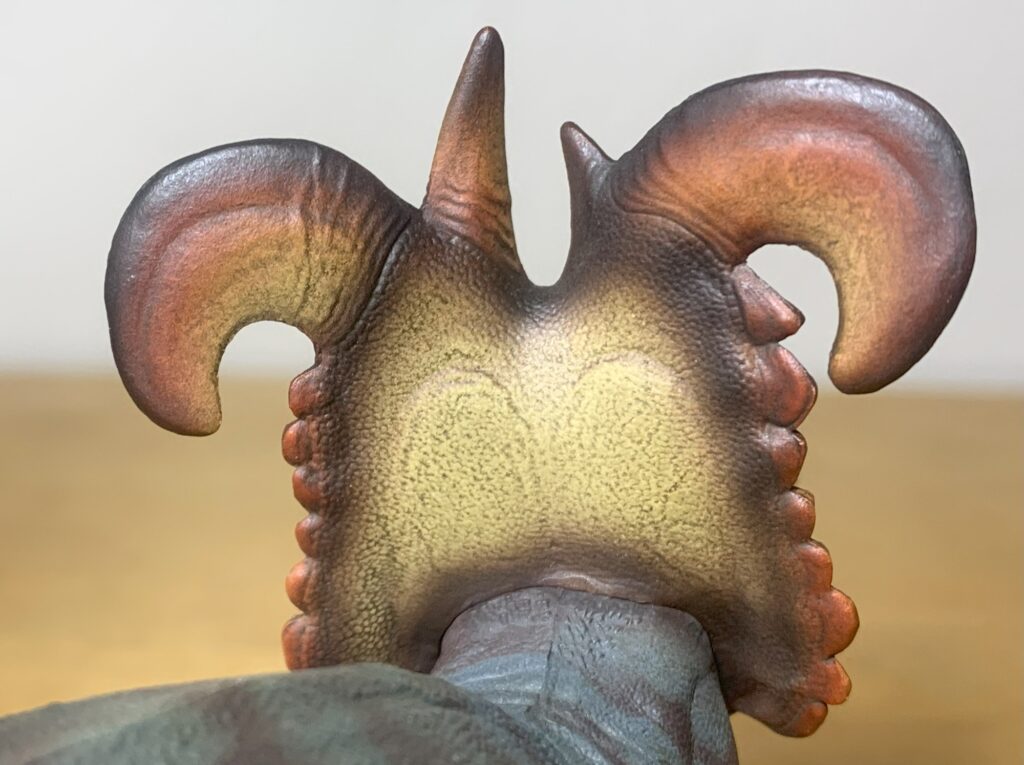
The rest of the face is detailed with small pebbly scales, and this includes the back of the frill. Some larger scales are clustered around the sunken orbits and a row of feature scales runs down the midline of the frill, the scales are smallest around the nostrils. The beak is smooth and angular, appearing sharp and formidable. A second point on either side of the beak can be seen, looking like the tomial tooth seen on falcons. On the lower jaw there’s a flattened spot where the “tomial tooth” would be rubbing against. The inside of the mouth includes a sculpted tongue, nasal openings on the roof of the mouth, and a battery of teeth in the back of the jaw. Grooves are sculpted around the bases of the larger horns. There are a lot of small but appreciable details here.
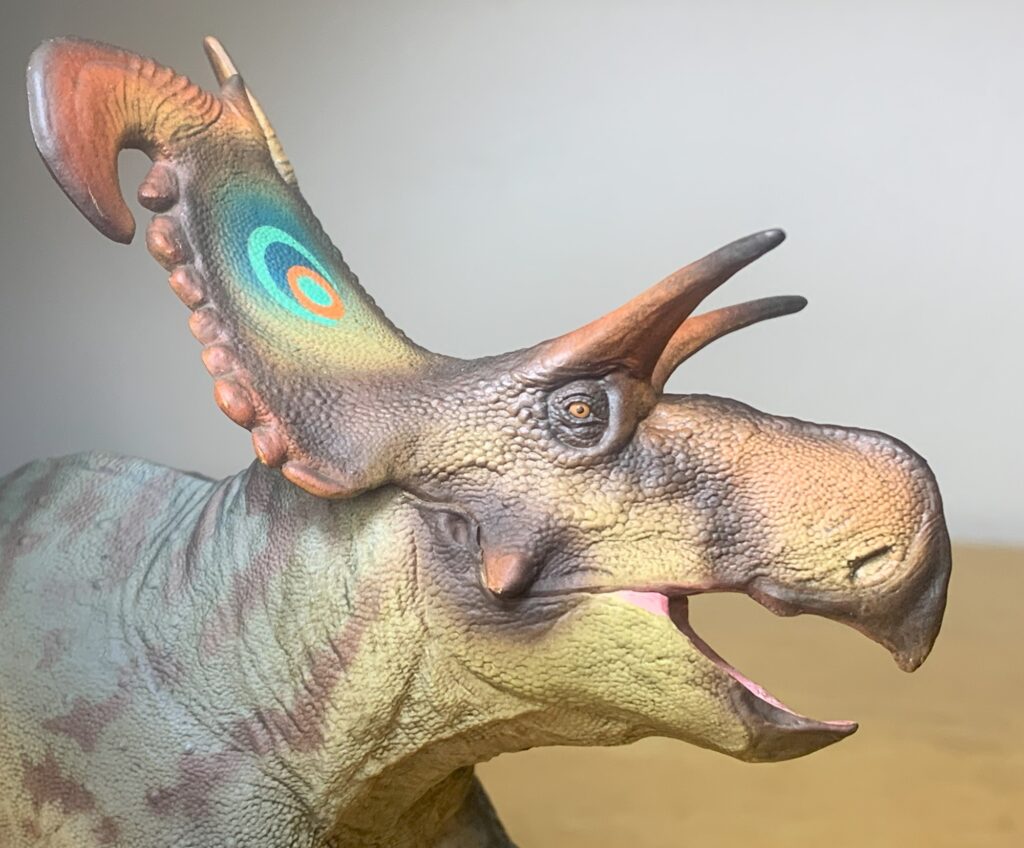
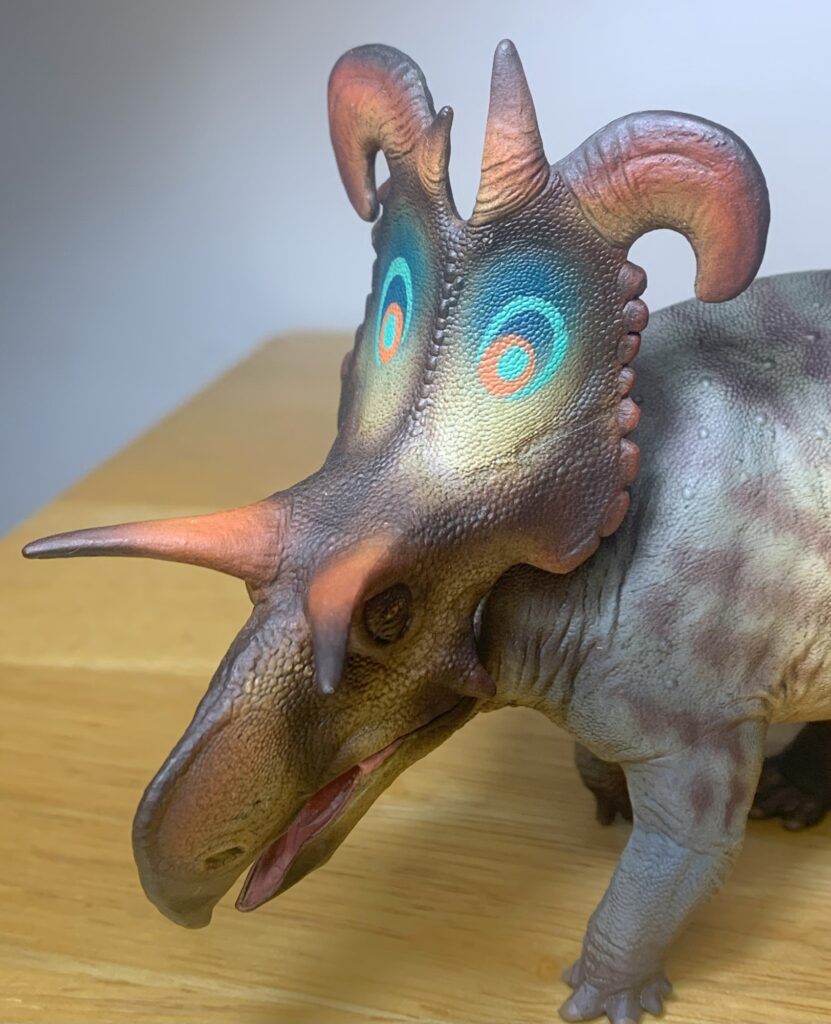
Frederik has a typical centrosaurine body plan, which includes a robust build, rounded torso, muscular limbs, wide hips, and a short tail. The hands are properly oriented outwards with three weight-supporting digits possessing claws and two clawless, reduced digits. Four toes are sculpted on each hindlimb. All bodily orifices are accounted for. The body is detailed with fine pebbly scales and larger feature scales scattered throughout. Wrinkles and skin folds are sculpted where appropriate, such as along the neck and limb joints.
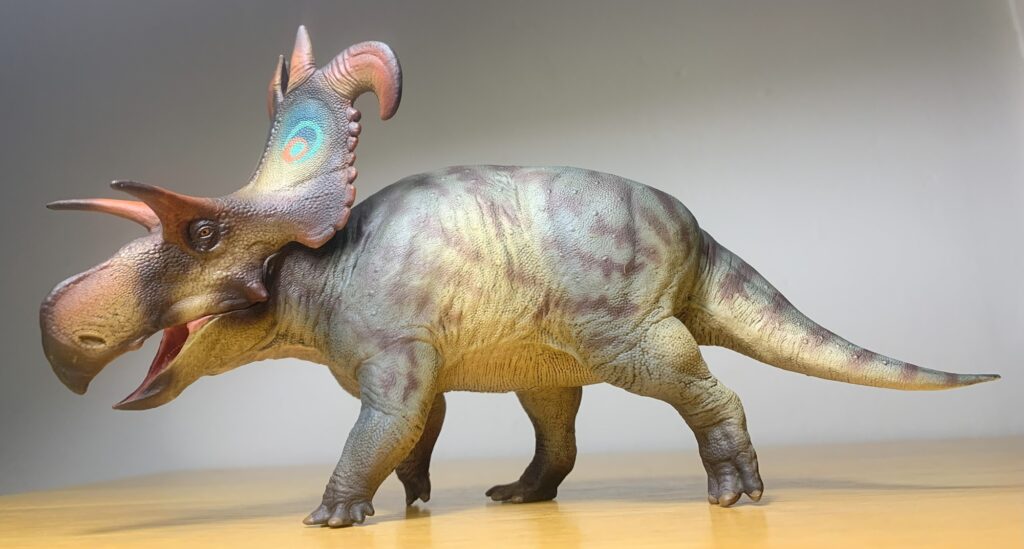
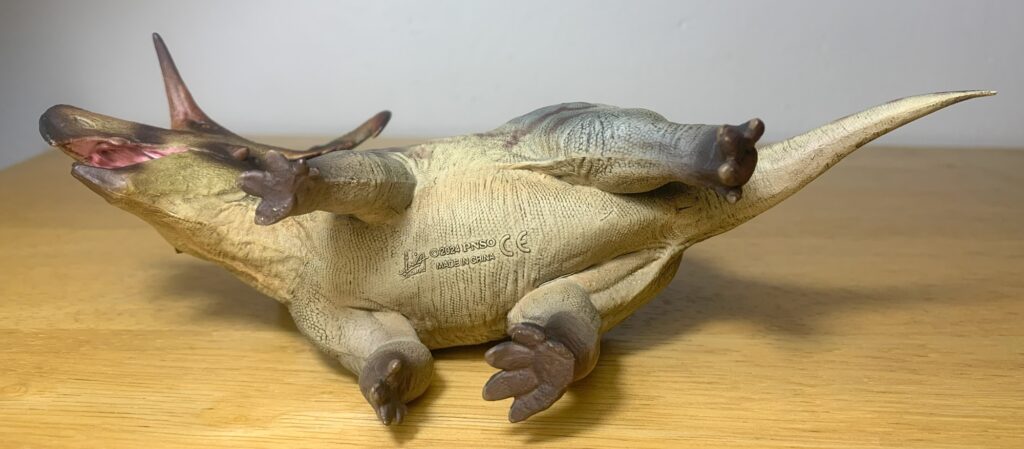
The paintjob is a bit…familiar. It looks like PNSO may have taken some notes from Haolonggood, implementing a blue-gray coloration and squiggly-line pattern that Haolonggood is a frequent fan of. Familiarity aside, it is one of PNSO’s most striking paintjobs and as usual, well implemented. The body is blue-gray with a creamy tan underside and a nice transition between the two colors. Brown squiggles overlay the base colors and although I’m not usually a fan of squiggles they’re well done here, nicely integrated with and blended into the base colors.
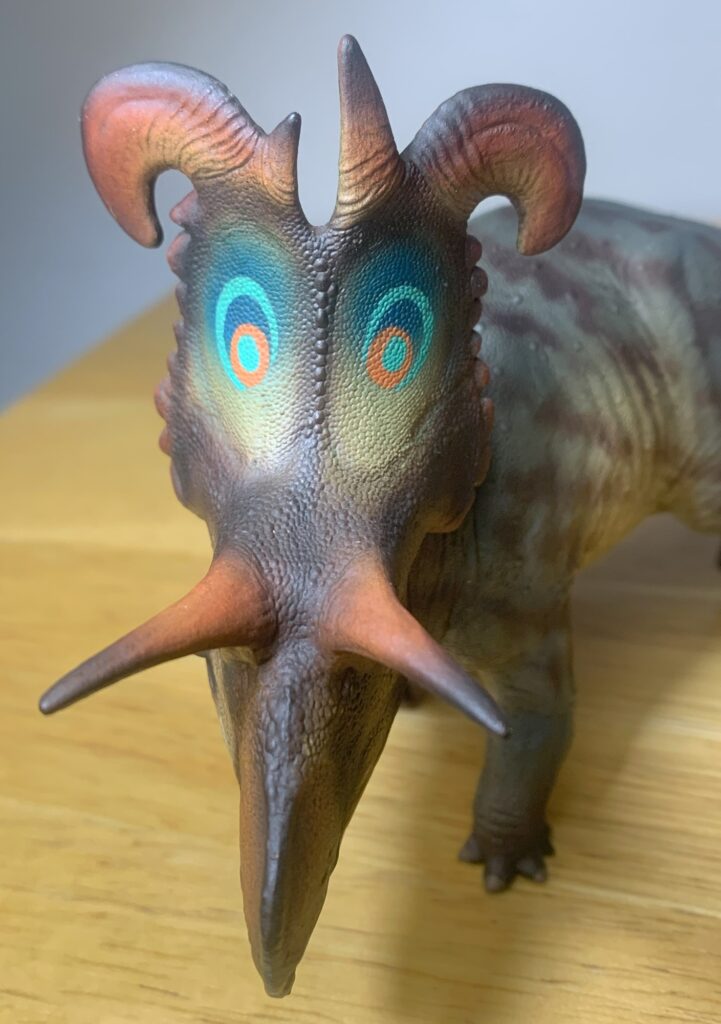
The head is particularly complex with many shades of brown, dull orange, and dull green blended together. The brow horns are orange at the base and transition to dark brown at the tips. The first set of epiparietals are orange at the base and transition to dark brown while the curved second set of epiparietals are orange on their inside surface and dark brown on the outside surface. The rest of the epiparietals and episquamosals are also picked out in dull orange. The beak is dark brown, and the inside of the mouth is glossy pink. Even the teeth are painted white. Prominent spots are painted over the fenestra on the frill. Blended shades of green and orange are overlayed with turquoise and orange eyespots. These spots have an obvious “stamped on” appearance that I don’t really like but is easy to ignore.
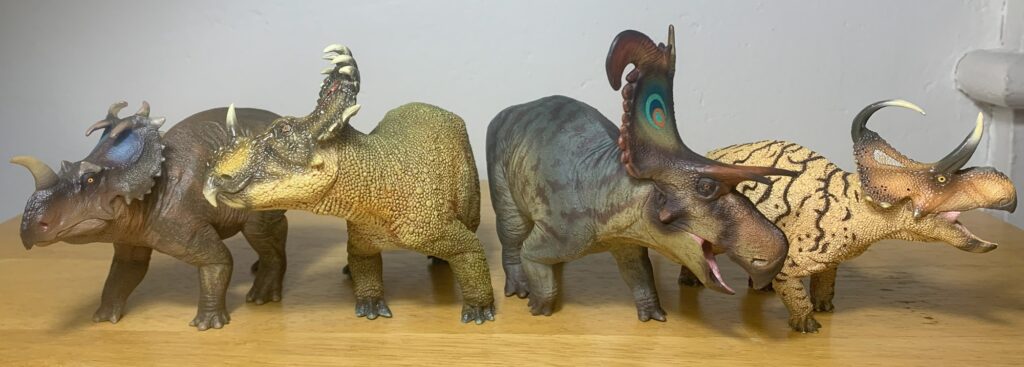
The PNSO Lokiceratops is a practically flawless model. The stamped-on eyespots are the only negative criticism I can think of, although some people might not like the lack of cheeks either. PNSO’s Lokiceratops is not only one of 2024’s best figures but also their best ceratopsian to date. PNSO figures might be few and far between these days, but the quality has only improved. Frederik the Lokiceratops is currently available widely online and retails for about $35. It is an essential addition to any ceratopsian collection, and I wouldn’t expect a better Lokiceratops from any other company.
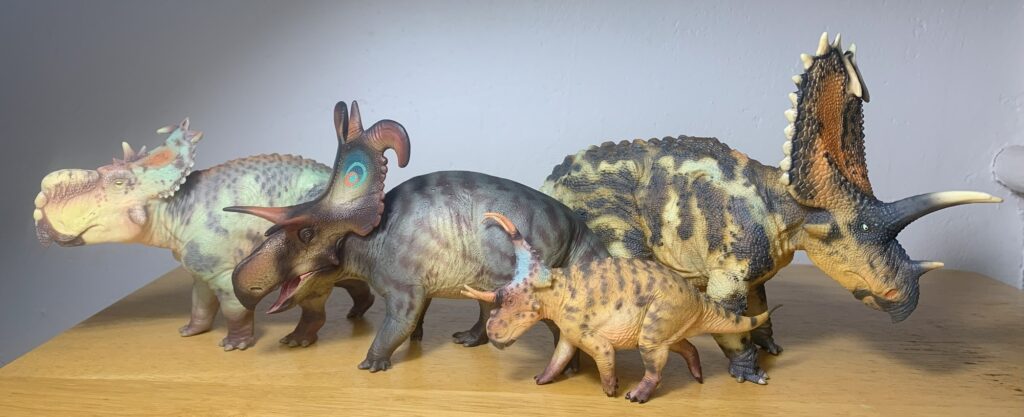
Disclaimer: links to Ebay and Amazon on the DinoToyBlog are affiliate links, so we make a small commission if you use them. Thanks for supporting us!





While I’m not a fan of the “cheekless” look, this was the first non-theropod PNSO I have bought in probably 4 years – beautiful sculpt and paint job of a new cool ceratopsian. A+ PNSO! 🙂
I never much liked the cheekless look either, it’s one reason I skipped the Eofauna Triceratops. I’m getting used to it though.
Great review of a perfect figure. In my opinion, this one of, if not THE best ceratopsian figure on the market. 5 stars!
Thanks! You might be right about it being the best ceratopsian on the market, as bold a claim as that may seem.
It’s certainly an excellent model, and a great figure to end 2024 on for the company; it’s so cool to see a direct collaboration with the paleontological team too! Here’s to hoping we get more releases of this caliber from PNSO soon.
Pnso esta sufriendo una demanda, de ahí que se halla mantenido opaco todo este tiempo.
What a wonderful frill!
I agree! I am frilled to have it in my collection 😎